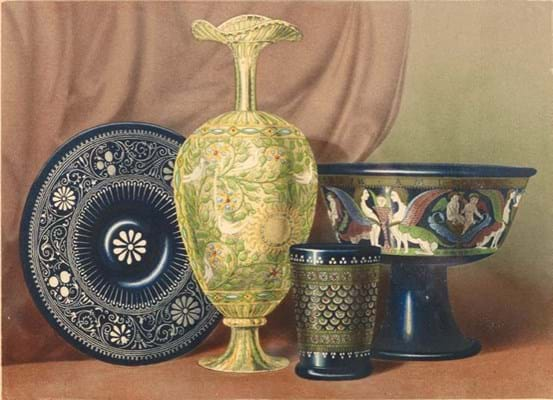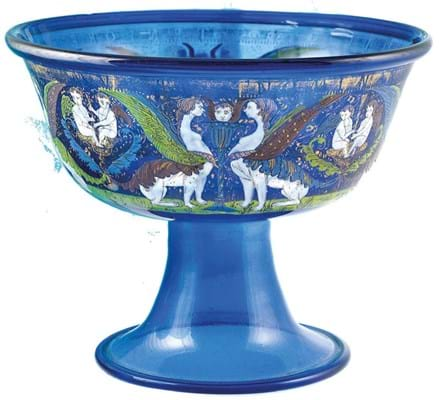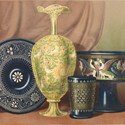The bowl came to the Bewdley dealer after purchase at Christie’s sale of the collection of Baroness Batsheva de Rothschild (1914-99) in 2000. It was catalogued at the time as a 19th century historicist piece and the client, who remains anonymous, bought it for just £4700 (plus 25% buyer’s premium).
“We knew it was a very special piece,” says Susan Harrington-James of Mayflower, who had been approached by her client to broker a future sale before the auction. More recently, in 2015, the bowl was sent for X-ray fluorescence analysis at Cranfield University. Tests showed that the enamel was free of later pigmentations and suggested a date of c.1490.
Measuring 6½ x 8½in (16.5 x 21cm), it is decorated with winged sphinxes and pairs of cherubs seated on gilt urns. The inscription Tenpore Felici Multi Nominator Amini translates as ‘In times of abundance one has lots of friends’.
It is first recorded in the collection of George Field, Baron Alphonse de Rothschild (1827-1905), who contributed the piece to The Art Treasures of the United Kingdom exhibition in Manchester in 1857. It then passed by descent to Baroness Batsheva.
Mayflower approached institutions in the UK, Europe and the Far East before finding a buyer at the Art Institute of Chicago. Christopher Monkhouse, curator of European decorative arts, came to London to examine the bowl for the collection.
“He viewed it for over an hour and could find nothing wrong with it. He fell in love,” said Harrington-James.
The museum finalised the purchase of the piece in December. It will form part of its upcoming exhibition Saints and Heroes: Art of Medieval and Renaissance Europe in March and will remain in the gallery’s permanent collection.













